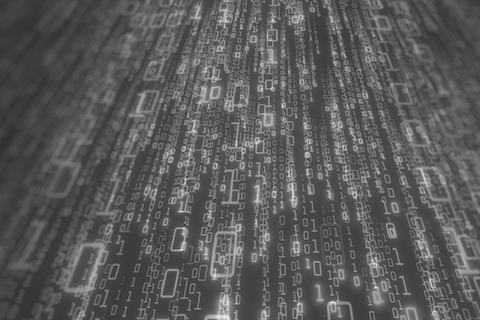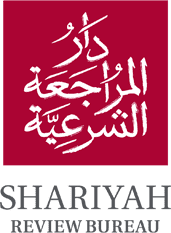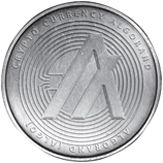Algorand is a decentralized network launched in June 2019 by a computer scientist and MIT professor Silvio Micali to solve the blockchain’s trilemma of achieving speed, security, and decentralization simultaneously. The permissionless, open-source network allows anyone to build applications. It is designed to be a payments-focused network with rapid transactions and a strong focus on achieving near-instant finality — that means processing over 1,000 transactions per second (TPS) and achieving transaction finality in less than five seconds.
It uses a proof-of-stake (PoS) consensus algorithm to validate transactions and maintain the integrity of the Algorand blockchain. One of the key features is its ability to support a high transaction throughput, making it suitable for use in a wide range of applications including financial transactions, supply chain management, and identity verification.
The Algorand blockchain is also designed to be highly secure, using cryptographic techniques to prevent tampering and ensure the integrity of the data stored on the network. It is also designed to be decentralized, with no single entity in control of the network.
How is Algorand used?
Algorand enables users to create smart contracts (programmatic agreements for building decentralized applications) and tokens that can represent both new and existing assets.
Consensus mechanism
It uses a Proof-of-Stake (PoS) consensus mechanism, and distributes validator rewards to all holders of its native ALGO cryptocurrency. Through strong throughput capacity and equitable community incentivization, Algorand is capable of managing the high-throughput requirements of widespread global usage and a variety of use cases.
In a PoS consensus algorithm, the validators (also known as “bonded stakeholders”) validate transactions and maintain the integrity of the blockchain are chosen based on their stake (or “bond”) in the network.
Here’s how the Algorand Protocol works:
- A validator broadcasts a block of transactions that they wish to add to the Algorand blockchain.
- Other validators on the network verify the block and reach consensus on its validity.
- If the block is deemed valid, it is added to the Algorand blockchain, and the validator who proposed it is rewarded with ALGO tokens.
- If the block is deemed invalid, it is rejected and the validator who proposed it is punished by losing a portion of their bond.
The process of reaching consensus on Algorand is facilitated by the use of a cryptographic technique known as a verifiable random function (VRF). The VRF is used to randomly select the validators who will propose and validate blocks, which helps to ensure that the consensus process is fair and unbiased.
Achieving Consensus
Validators on the Algorand blockchain agree on the validity of a transaction by verifying that it conforms to the rules and policies of the Algorand network. This includes checking that the transaction is properly formatted and signed, that it does not violate any network rules, and that it does not conflict with any other transactions in the network.
 To verify transactions, validators use a variety of cryptographic techniques and protocols, including hashing, digital signatures, and cryptographic proof systems. These techniques allow validators to ensure the integrity and security of the Algorand network, and to protect against fraud and tampering.
To verify transactions, validators use a variety of cryptographic techniques and protocols, including hashing, digital signatures, and cryptographic proof systems. These techniques allow validators to ensure the integrity and security of the Algorand network, and to protect against fraud and tampering.
Once a transaction has been verified and deemed valid, it is added to a block of transactions along with other valid transactions. The block is then broadcasted to other validators on the network, who verify the transactions in the block and reach consensus on their validity. If a majority of validators agree that the transactions in the block are valid, the block is added to the Algorand blockchain and the validator who proposed it is rewarded with ALGO tokens. If a majority of validators disagree and determine that the transactions in the block are invalid, the block is rejected, and the validator who proposed it is punished by losing a portion of their bond.
Algorand Standard Asset
Algorand also allows developers to use the Algorand Standard Asset (ASA) protocol to create new tokens or to transfer existing tokens to the Algorand ecosystem. For example, stablecoins like USDT and USDC also exist as ASAs on the Algorand blockchain and enjoy much higher throughput and much lower transaction fees than what is typical on Ethereum. Further, as central banks continue to research networks to host their central bank digital currencies (CBDCs), Algorand has become a viable option and has been chosen to host the Marshall Islands CBDC.
Use Cases of Algorand
Being a decentralized, open-source blockchain platform, that is designed to be fast, secure, and scalable it has a wide range of potential use cases across a variety of industries. Some possible use cases for Algorand include:
- Financial transactions: It’s high transaction throughput and low fees make it well-suited for use in financial applications such as payment processing, remittances, and foreign exchange.
- Supply chain management: Algorand’s decentralized and transparent nature make it a good fit for use in supply chain management, where it can be used to track and verify the provenance of goods.
- Identity verification: It’s cryptographic security features make it suitable for use in identity verification applications, where it can be used to securely store and verify identity information.
- Voting: Algorand’s transparency and immutability make it well-suited for use in voting systems, where it can be used to securely and transparently record and count votes.
- Asset tokenization: It can be used to create and issue digital assets, such as tokens representing ownership of real-world assets such as real estate or art.
ALGO Token
ALGO is the native cryptocurrency of the Algorand blockchain. It is used as a means of exchange within the Algorand ecosystem, and it is also used to facilitate the security and operation of the Algorand network.
One of the primary use cases for ALGO is as a means of payment for goods and services within the Algorand ecosystem. It can be used to pay for transactions on the Algorand network, such as the transfer of assets or the execution of smart contracts.
“To verify transactions, validators use a variety of cryptographic techniques and protocols, including hashing, digital signatures, and cryptographic proof systems.
ALGO is also used as a reward for participating in the Algorand network as a validator. Validators are responsible for validating transactions and maintaining the integrity of the Algorand blockchain, and they are rewarded in ALGO for their contributions.
In addition to these core use cases, ALGO may also be used as a store of value or a speculative investment by individuals or organizations. It is traded on various cryptocurrency exchanges, and its value is determined by supply and demand on these exchanges.
Overall, the use case of ALGO is closely tied to the operation and use of the Algorand blockchain. As the Algorand ecosystem continues to grow and develop, the use cases for ALGO are likely to evolve and expand.
Conclusion
Algorand is an open source blockchain network upon which anyone can build and develop smart contracts as well as tokenise assets. Due to its open-source nature, the activities on Algorand should be reviewed at a user level as opposed to a platform level. The Algorand platform can facilitate any type of transaction, compliant or otherwise. Therefore, a Sharia governance framework cannot be applied to Algorand as a platform, rather guidance and governance can be given to developers looking to use the platform. Using Algorand to tokenise non-compliant assets is not Sharia compliant. Similarly, executing any non-compliant transactions on Algorand will not be considered compliant.
Based on and subject to the foregoing information, and for the purposes of this conclusion, nothing has come to our attention that causes us to believe that ALGO are in breach of Sharia* principles and rulings as adopted by the scholars conducting this research.
*Attention is drawn to the term ‘Sharia’ and ‘Sharia compliant’ and its interpretation thereof as expressed in the following link https://shariyah.net/glossary/



